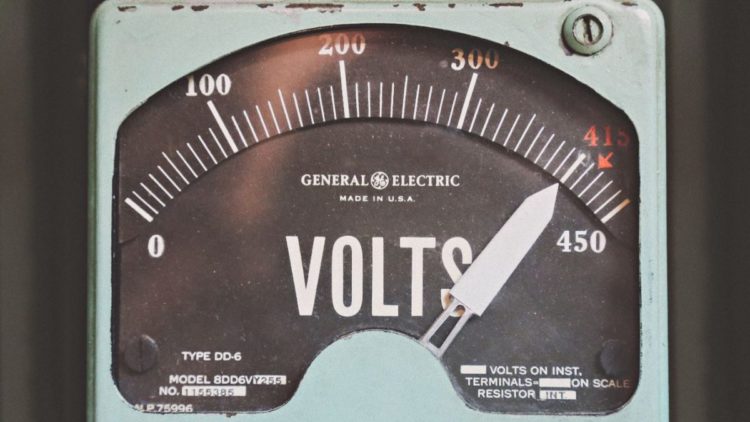
What Is SEO PR?
Explain exactly what SEO PR is, they said… and put some gifs in it.
Sure.
I’m a PR person who crossed over to the world of SEO a few years ago – I started working in PR in London about 10 years ago, working at some brilliant agencies, before moving to Brighton where I now work as a PR consultant at Propellernet. So, what is SEO PR?
In a nutshell – it’s PR, just with a different objective.
It’s still about creating genuinely interesting, newsworthy campaigns and content that are pitched to media to secure coverage. We use the same creative techniques and tactics as PRs, but we use them to deliver more than just coverage.
The Measurement Problem
One of the things I found challenging with traditional PR was how difficult it was to measure – increasing brand awareness, driving conversation, building buzz, maximising exposure… yeah, all great, but how do you properly measure those things? Obviously, only a handful of people still use AVE (advertising value equivalent) to measure the value of a piece of coverage, but what do other commonly used metrics like circulation, estimated coverage views, likes, comments, shares, sentiment analysis or key messaging penetration actually do for a brand?
Enter SEO PR – a data-driven, properly measurable form of PR that can provide ROI. How? By boosting a brand’s visibility by getting it higher up the search results in Google. So, when ‘Sally’s Cakes’ moves from position nine to position two on the first page for the search term ‘unique wedding cakes’, we can accurately report back to Sally on the additional traffic, sales and revenue that have come from that. Bosh.
Don’t get me wrong – I’m not going on an offensive against traditional PR. SEO PR and PR are fantastic friends and they complement each other brilliantly. One shouldn’t replace the other – they should work together.
To explore what SEO PR is more, and to make it a bit more interesting, here’s a nice list with some gifs:
Five Ways SEO PR Is Different to Traditional PR
- Double page spreads are lovely, but essentially pointless

This is probably an obvious one – but the main objective of SEO PR is to increase rankings on search engines for a range of key words or phrases. Google is ruddy powerful, but as of yet, it hasn’t progressed to sending its creepy crawlers to the local shop to pick up a copy of The Times. Whereas a double page spread would be a massive win for a traditional PR campaign, the only coverage that matters for an SEO PR campaign is online.
- DA is queen

Domain Authority (DA) is a measure of how authoritative a site is. Scores range from 1 to 100, with higher scores corresponding to a greater ability to rank. It’s worked out using a variety of factors including the number and quality of inbound links. The BBC has a DA of 96 for example. So, when it comes to creating that all important media list, a site’s DA is one of the most important factors to consider. Obviously, all sites need to be relevant to maximise potential pickup, but sites that may not be chosen for a traditional PR media list could well be key targets on an SEO PR list because they have a high DA.
- It’s all about the links

Google has a complicated algorithm that determines where your site ranks for different search queries. It’s written by unicorns and goblins and it’s updated daily. No one knows exactly what’s in the magical algorithm, but we have a bunch of brilliantly talented fairies and dragons here, who are great at puzzling it out. We know that securing organic links to your site from a variety of authoritative sites with a high DA will help to boost your site’s ranking, and hence visibility, which should in turn lead to more clicks and conversions.
It’s like a really clued up, foodie friend giving you a recommendation for a great new restaurant. Google sees a link from an authoritative site as a strong recommendation for your site, so it makes your site more visible in the search results.
So, like PR, coverage is definitely what it’s all about, but if a campaign generates 50 pieces of coverage and only 2 links, from an SEO PR perspective, it’s not been a stonking success.
All links are not created equal though…
There are two types of links: Followed vs no follow – a ‘followed’ link means Google will ‘pass on the authority’ from the site that’s linked to your site. Great. A ‘no follow’ link essentially makes the link invisible, so the authority isn’t passed on. Not so great. You can’t have a followed link if you’ve paid for the coverage or have remunerated the journalist or blogger in any way either. This is because it’s against Google’s guidelines – if you choose to disregard them, Google could issue heavy penalties which drastically affect your site’s visibility, so paying for wires or paying bloggers aren’t options in SEO PR.
Homepage links: A link to your homepage isn’t as valuable as a link to a strategically created content hub that contains internal links out to key product categories. If you’re a brand-new site or company and you don’t have a single link coming to your site, then of course homepage links are great… but their value diminishes over time. So, if you’re only ever securing links to your homepage, you’re missing out on opportunities to increase your rankings for a range of different keywords, which means it’s very likely you could be missing out on extra visits from consumers, and missing out on additional sales.
Links in isolation: Just concentrating on links and nothing else is also not a good idea. If your site is poorly set up or you don’t have a well-informed content strategy on the go, the value of any links you secure is reduced. To maximise your site’s ranking, you need all three to be singing in harmony: solid technical foundations, a strategic content programme, and the cherry on the cake – link building activity that’s based on opportunity and keyword analysis.
And as luck would have it, we’ve got a wealth of experience and expertise in putting those wheels smoothly into motion, so if you need some support with your SEO PR, get in touch.
- Your pitching window can be vast

Unlike PR where you typically have a small pitching window to sell in a timely piece of news, a big focus in SEO PR is to create truly evergreen content that can be outreached over a large pitching period. This means we love ideas that would be of interest to a wide variety of sites because it means we can keep pitching for months. A recent example of this was our award-winning Music Mapped campaign for Celebrity Cruises. We’re currently standing at 156 pieces of coverage with 139 links, and although we’ve now stopped pitching, because it’s an evergreen campaign, it’s generating additional pieces of coverage and links all by itself! To read more about the campaign, have a read of our blog post here.
- It’s properly measurable

Everyone loves a bit of ROI – it helps to give clients reassurance and confidence when you’re pitching in campaign ideas and it means you can directly attribute SEO PR activity with wider business success. Before starting a campaign, we see how a brand is ranking for a set of keywords. Based on that, we can then calculate the additional clicks, traffic and revenue that are generated from rank increases after implementing a cracking SEO PR campaign, which is a definite win for us and for our clients!
To see more about how our SEO PR campaigns have generated links, coverage and revenue for our clients, take a look at some of our case studies.



